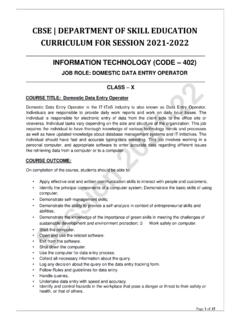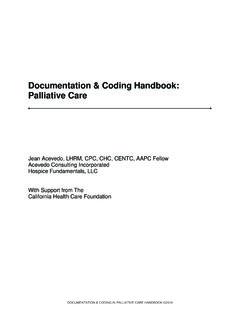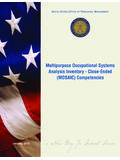Transcription of Risk management for electronic banking and electronic ...
1 electronic money11 RISK management FOR electronic BANKINGAND electronic MONEY ACTIVITIES(March 1998) payment media are likely to figure importantly in the development of electroniccommerce, and retail electronic banking services and products, including electronic money,could provide significant new opportunities for banks. electronic banking may allow banks toexpand their markets for traditional deposit-taking and credit extension activities, and to offernew products and services or strengthen their competitive position in offering existingpayment services. In addition, electronic banking could reduce operating costs for broadly, the continued development of electronic banking and electronic money maycontribute to improving the efficiency of the banking and payment system and to reducing thecost of retail transactions nationally and internationally.
2 This could potentially result in gainsin productivity and economic welfare. Consumers and merchants may be able to increase theefficiency, with which they make and receive payments, and enjoy greater banking may also increase access to the financial system for consumers who havepreviously found access scope of this report is necessarily restricted in two respects. First, it deals with the riskmanagement of electronic banking and electronic money activities from a banking supervisoryperspective only and does not, for example, address the monetary consequences. Second,while many of the risks described in the report apply both to bank and non-bank issuers andproviders, this report addresses banks Purpose and organisationThe development and use of electronic money and some forms of electronic banking are stillin their early stages.
3 Given the degree of uncertainty about future technological and marketdevelopments in electronic banking and electronic money, it is important that supervisoryauthorities avoid policies that hamper useful innovation and experimentation. At the sametime, the Basle Committee recognises that along with the benefits, electronic banking andelectronic money activities carry risks for banking organisations, and these risks must bebalanced against the purpose of this document is to provide considerations for supervisory authorities andbanking organisations as they develop methods for identifying, assessing, managing andcontrolling the risks associated with electronic banking and electronic money. The BasleElectronic money2 Committee regards the document as an initial step in an ongoing review and discussion ofsupervisory issues and responses related to technological advances in electronic retailproducts and Basle Committee is distributing this document to supervisors worldwide with theexpectation that it will facilitate development of appropriate supervisory approaches to themanagement of risks in electronic banking and electronic money activities.
4 Supervisors maywish to circulate the document to the institutions under their discussion is general in nature because the technology for electronic banking andelectronic money is changing rapidly, and products and services in the future may be verydifferent from those available today. At this relatively early stage in the development of someelectronic banking and electronic money activities, many aspects of risks are neither fullydiscernible nor readily measurable. A premature regulatory approach would run the risk ofstifling innovation and creativity in these areas. Therefore, supervisors should encouragebanks to develop a risk management process rigorous and comprehensive enough to deal withknown material risks, and flexible enough to accommodate changes in the type and intensityof material risks associated with their electronic banking and electronic money activities.
5 Therisk management process can be effective only if it is constantly remainder of this document is organised as follows. The next section of the Introductionpresents definitions of electronic banking and electronic money, and refers to key roles bankscan play as participants in electronic money activities. Section II identifies risks that banksmay face in electronic banking and electronic money. The identification and analysis of risksdoes not aim to be exhaustive; rather, the discussion is intended to be illustrative of the typesof problems banks may face. Among these, analysis suggests that operational, reputational,and legal risk may be more likely to the development of electronic banking and electronic money progresses, interactionbetween banks and their customers across national boundaries is likely to increase. Suchrelationships may raise different issues and risks for banks and for supervisors.
6 In light of this,Section II includes a discussion of cross border on the identification and analysis of risks, Section III outlines the major steps in a riskmanagement process for banks engaging in electronic banking and electronic money 1 Banks are also likely to face risks that can affect the value of their shareholders interest. For example,faced with a choice between competing new technologies, bank management risks choosing one whichdoes not become widespread and hence may not be successful, or it may choose one which does not fitwell with other products and services. As with any business decision management takes, risks to financialsuccess posed by electronic banking and electronic money are of central concern to it and to , because supervisory authorities are charged with protecting the safety and soundness of thebanking system, but not with ensuring bank profitability, such "shareholder value" issues are not of directconcern to supervisors, unless the viability of an institution is threatened.
7 Therefore, in general, thedocument does not discuss this perspective on electronic money and electronic banking money3activities. The process has three main steps: assessing risks, implementing measures to controlrisk exposures, and monitoring Definitions of electronic banking and electronic banking refers to the provision of retail and small value bankingproducts and services through electronic Such products and services can includedeposit-taking, lending, account management , the provision of financial advice, electronic billpayment, and the provision of other electronic payment products and services such aselectronic money (defined separately, below).Two fundamental aspects of electronic banking are the nature of the delivery channels throughwhich activities are pursued, and the means for customers to gain access to those delivery channels include "closed" and "open" networks.
8 "Closed networks" restrictaccess to participants (financial institutions, consumers, merchants, and third party serviceproviders) bound by agreements on the terms of membership. "Open networks" have no suchmembership requirements. Currently, widely used access devices through which electronicbanking products and services can be provided to customers include point of sale terminals,automatic teller machines, telephones, personal computers, smart cards and other money refers to "stored value" or prepaid payment mechanismsfor executing payments via point of sale terminals, direct transfers between two devices, orover open computer networks such as the Stored value products include "hardware"or "card-based" mechanisms (also called " electronic purses"), and "software" or"network-based" mechanisms (also called "digital cash").
9 Stored value cards can be"single-purpose" or "multi-purpose".4 Single-purpose cards ( , telephone cards) are used to 2 This document focuses on retail electronic banking and electronic payment services. Large-valueelectronic payments and other wholesale banking services delivered electronically are outside the scope ofthe present official bodies have each issued their own definition of electronic money. As pointed out in arecent Group of Ten report on electronic money, a precise definition of electronic money is difficult toprovide, in part because technological innovations continue to blur distinctions between forms of prepaidelectronic mechanisms. (See electronic Money: Consumer protection, law enforcement, supervisory andcross-border issues, Group of Ten, April 1997, for a list of such studies.)
10 The current document drawsfrom both the Group of Ten report and Security of electronic Money, Bank for International Settlements,August 1996, in establishing a definition of electronic money. The latter report explains distinctions in thetechnical representation of money on stored-value products. In particular, "balanced-based" products aredevices which manipulate a numeric ledger, such that transactions are performed as debits or credits to abalance; and "note-based" products which perform transactions by transferring the appropriate amount ofelectronic "notes" (also called "coins" or "tokens"), which are of a fixed denomination, from one device toanother. Debit cards and credit cards are retail electronic payment mechanisms, but are not considered tobe electronic money because they are not prepaid value cards may be characterised by the use of a magnetic stripe or a computer chip embedded inthe card.
















